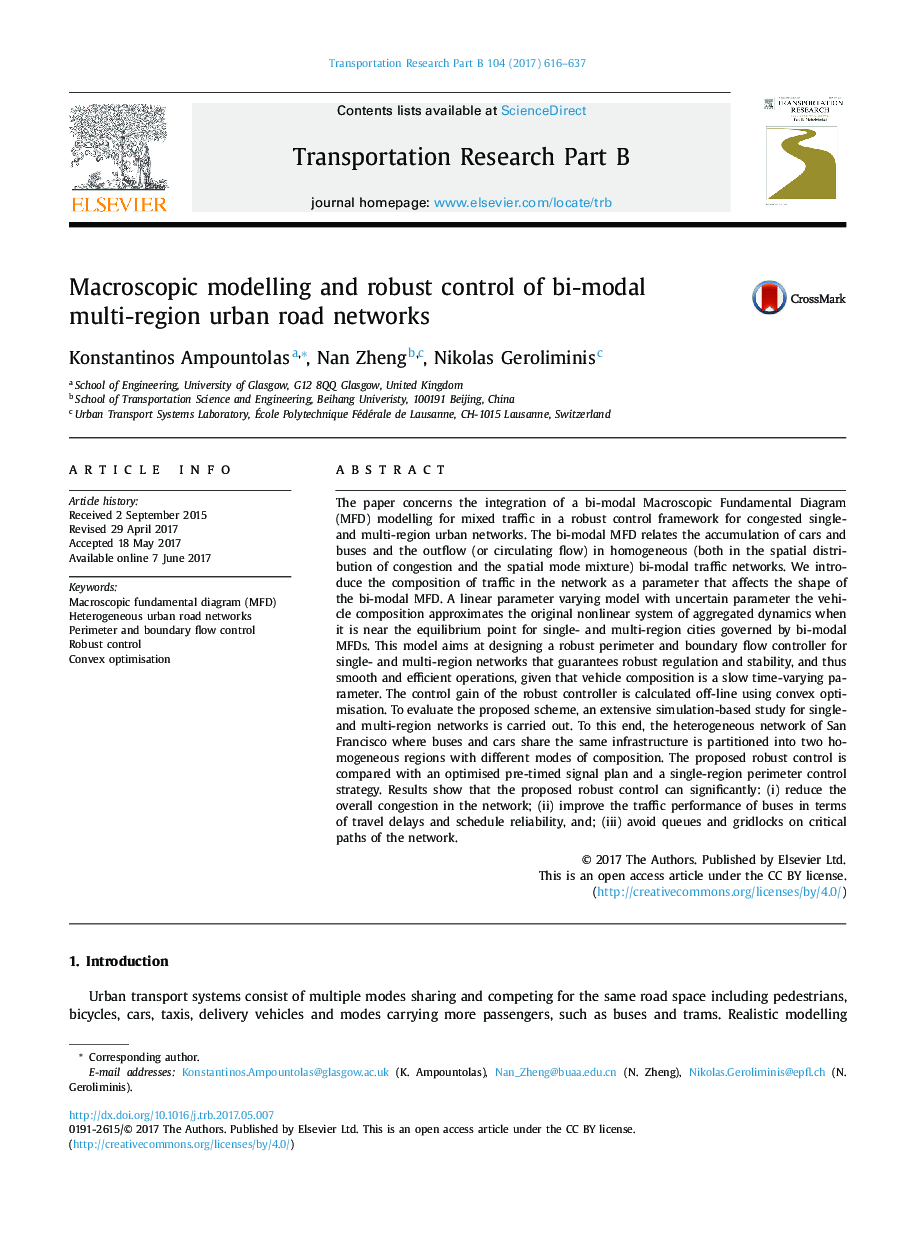| Article ID | Journal | Published Year | Pages | File Type |
|---|---|---|---|---|
| 5126979 | Transportation Research Part B: Methodological | 2017 | 22 Pages |
â¢Modelling of multi-region urban networks via bi-modal macroscopic fundamental diagrams.â¢Integrating uncertainty in traffic composition to bi-modal traffic dynamics.â¢Developing robust control schemes through convex optimisation.â¢Mitigating traffic congestion for all modes of travel in single- and multi-region cities.â¢Improving bus service reliability and equity, even for shared infrastructure.
The paper concerns the integration of a bi-modal Macroscopic Fundamental Diagram (MFD) modelling for mixed traffic in a robust control framework for congested single- and multi-region urban networks. The bi-modal MFD relates the accumulation of cars and buses and the outflow (or circulating flow) in homogeneous (both in the spatial distribution of congestion and the spatial mode mixture) bi-modal traffic networks. We introduce the composition of traffic in the network as a parameter that affects the shape of the bi-modal MFD. A linear parameter varying model with uncertain parameter the vehicle composition approximates the original nonlinear system of aggregated dynamics when it is near the equilibrium point for single- and multi-region cities governed by bi-modal MFDs. This model aims at designing a robust perimeter and boundary flow controller for single- and multi-region networks that guarantees robust regulation and stability, and thus smooth and efficient operations, given that vehicle composition is a slow time-varying parameter. The control gain of the robust controller is calculated off-line using convex optimisation. To evaluate the proposed scheme, an extensive simulation-based study for single- and multi-region networks is carried out. To this end, the heterogeneous network of San Francisco where buses and cars share the same infrastructure is partitioned into two homogeneous regions with different modes of composition. The proposed robust control is compared with an optimised pre-timed signal plan and a single-region perimeter control strategy. Results show that the proposed robust control can significantly: (i) reduce the overall congestion in the network; (ii) improve the traffic performance of buses in terms of travel delays and schedule reliability, and; (iii) avoid queues and gridlocks on critical paths of the network.
